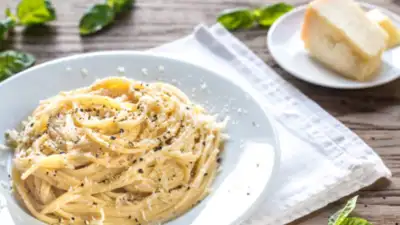ARTICLE AD BOX

The 2025 Ig Physics Nobel Prize was awarded for a delightfully quirky but scientifically important discovery: the secret to making perfect cacio e pepe pasta sauce every time. This isn’t just about delicious food, it’s a story of how genuine curiosity and scientific thinking can solve even life’s everyday mysteries, like why it’s so hard to get this famous Italian dish creamy rather than clumpy.The Ig Nobel Prize is a satirical prize awarded annually since 1991 to promote public interaction and engagement with scientific research.
What’s so tricky about cacio e pepe?
Cacio e pepe is a beloved Roman pasta dish made with only a few ingredients: pasta (usually tonnarelli), Pecorino Romano cheese, black pepper, and some starchy pasta water. The goal is to mix everything into a smooth, creamy sauce without lumps. But even enthusiastic home cooks and Italian chefs struggle with this.
Most attempts end up with the cheese separating, clumping, or turning rubbery.Why does this happen? The right texture depends on how the cheese proteins interact with starch and water, especially their temperature. If it gets too hot, the proteins in the cheese break apart and stick together, making the sauce lumpy.
How did physicists get involved?
Fabrizio Olmeda, a physicist at ISTA (Institute of Science and Technology Austria), got tired of hit-or-miss results in his own kitchen.
So, along with other Italian scientists from top universities, he decided to treat this cooking puzzle like a full-on physics experiment. Their approach was grounded in statistical physics—normally used to study things like genomics and complex systems. But Olmeda’s curiosity led him to this “pasta problem” even though it wasn’t his specialty.Their research wasn’t just a joke, the results were published in the scientific journal Physics of Fluids and celebrated at the Ig Nobel Prize ceremony in Boston.
The Ig Nobel Prizes honor studies that “make people laugh, then make them think,” and this one really does both. It’s funny to imagine serious scientists hunched over pasta in a laboratory, but their findings could actually make millions of meals tastier.
Science behind the sauce: What’s the secret?
Most recipes say to use starchy pasta water to help the cheese melt and create a creamy texture. But why does the sauce go wrong so often?The team discovered that a crucial step is missing in everyday cooking. The starch just from the boiled pasta isn’t enough to keep the sauce stable and creamy. Here’s the science breakdown:
- Starch matters: The cheese and water need extra starch to form a gel that binds with the cheese proteins and keeps them from clumping.
- Temperature is key: If the sauce gets hotter than 65°C (about 150°F), cheese proteins denature and tangle up, causing the sauce to separate and turn into a disappointing mess.
Perfect consistency: The trick is to add the exact amount of starch about 2–3% of the weight of the cheese to water and heat it until it becomes clear and thick, forming a “starch gel.” Mixing this gel with the cheese at a low temperature lets the starch do its job stabilizing the sauce.
Step-by-step recipe, science edition
Want to try the researchers’ foolproof method at home? Here’s how to use their scientific findings:
- Make starch gel: Mix 4 grams of starch (potato or corn) with 40 ml of water. Heat this mixture gently until it thickens and turns clear.
- Prep cheese: Grate 160 grams of Pecorino Romano cheese.
- Mix cheese and gel: Add your thickened starch water gradually to the cheese at a low temperature. Stir to blend.
- Cook pasta: Boil 240 grams of pasta until al dente. Save some of the starchy pasta water.
- Finish the sauce: Add black pepper and salt, mixing everything together. Combine the pasta with the new creamy sauce in the pan, adding more pasta water if needed to adjust the texture.
- Final taste: Season to your liking, plate, and enjoy your perfectly creamy cacio e pepe.
Why does this matter beyond cooking?
It’s fun to laugh about scientists getting so serious about pasta, but their research embodies the spirit of science: curiosity, precision, exploration, and playfulness.
The Ig Nobel Prize celebrates “real” science that’s quirky, creative, and accessible. President Martin Hetzer of ISTA summed it up: having fun can lead to real discoveries, big or small, whether that’s inventing a technology or nailing a pasta dish.
Curiosity beyond the pasta bowl
Olmeda’s team usually studies things like cell biology and genetic systems, but they took a risk by stepping into food science. As Olmeda put it, research doesn’t have to be limited by your main job—it’s good to let curiosity lead you elsewhere sometimes. The whole project is a call to embrace science as an adventure, and to see wonder in ordinary experiences.The “perfect cacio e pepe” study is about much more than just food. It’s about using science to solve frustrating problems, embracing creativity, and having fun with research.



.png)
.png)
.png)
















 2 hours ago
2
2 hours ago
2









 English (US) ·
English (US) ·